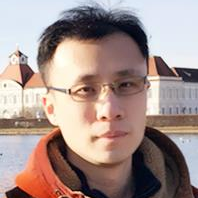Deep Neural Networks for Remote Sensing Scene Classification
A special issue of Remote Sensing (ISSN 2072-4292). This special issue belongs to the section "AI Remote Sensing".
Deadline for manuscript submissions: closed (1 December 2022) | Viewed by 17031
Special Issue Editors
Interests: remote sensing; hyperspectral image processing; machine learning
Special Issues, Collections and Topics in MDPI journals
2. Ningbo Institute of Surveying, Mapping and Remote Sensing, Ningbo 315042, China
Interests: multimodal remote sensing image interpretation
Special Issues, Collections and Topics in MDPI journals
Interests: hyperspectral imaging; computer vision; pattern recognition and their applications to remote sensing; agriculture; environment; medicine
Special Issues, Collections and Topics in MDPI journals
Special Issue Information
Dear Colleagues,
With the rapid growth of remote sensing data, processing and understanding remote sensing scene images has become more and more important. Owing to their powerful learning ability, deep learning techniques have been widely used in remote sensing data processing and analysis, which will be a feasible solution for remote sensing scene classification and interpretation. Currently, new deep network architectures need to be paid more attention as more suitable tools to develop for remote sensing scene classification, segmentation, detection and higher-level understanding. Therefore, boosting the development of deep networks in remote sensing scene classification is urgent and of vital importance in the field of remote sensing.
This Special Issue aims to develop state-of-the-art deep networks for more accurate remote sensing scene classification and recognition.
This Special Issue will accept topics regarding remote sensing scene classification, segmentation, detection, and understanding-related works. These include, but are not limited to, the following topics:
- Deep networks for remote sensing image scene classification;
- Deep networks for remote sensing image scene segmentation;
- Deep networks for remote sensing image scene detection;
- Remote sensing image scene benchmark datasets;
- Remote sensing image feature extraction and selection;
- Remote sensing image enhancement and fusion.
Dr. Danfeng Hong
Dr. Jing Yao
Dr. Jun Zhou
Guest Editors
Manuscript Submission Information
Manuscripts should be submitted online at www.mdpi.com by registering and logging in to this website. Once you are registered, click here to go to the submission form. Manuscripts can be submitted until the deadline. All submissions that pass pre-check are peer-reviewed. Accepted papers will be published continuously in the journal (as soon as accepted) and will be listed together on the special issue website. Research articles, review articles as well as short communications are invited. For planned papers, a title and short abstract (about 250 words) can be sent to the Editorial Office for assessment.
Submitted manuscripts should not have been published previously, nor be under consideration for publication elsewhere (except conference proceedings papers). All manuscripts are thoroughly refereed through a single-blind peer-review process. A guide for authors and other relevant information for submission of manuscripts is available on the Instructions for Authors page. Remote Sensing is an international peer-reviewed open access semimonthly journal published by MDPI.
Please visit the Instructions for Authors page before submitting a manuscript. The Article Processing Charge (APC) for publication in this open access journal is 2700 CHF (Swiss Francs). Submitted papers should be well formatted and use good English. Authors may use MDPI's English editing service prior to publication or during author revisions.
Keywords
- deep learning
- remote sensing
- feature extraction
- classification and recognition
- artificial intelligence
Benefits of Publishing in a Special Issue
- Ease of navigation: Grouping papers by topic helps scholars navigate broad scope journals more efficiently.
- Greater discoverability: Special Issues support the reach and impact of scientific research. Articles in Special Issues are more discoverable and cited more frequently.
- Expansion of research network: Special Issues facilitate connections among authors, fostering scientific collaborations.
- External promotion: Articles in Special Issues are often promoted through the journal's social media, increasing their visibility.
- Reprint: MDPI Books provides the opportunity to republish successful Special Issues in book format, both online and in print.
Further information on MDPI's Special Issue policies can be found here.







